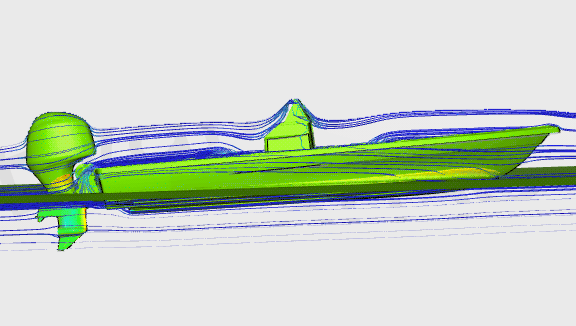Fluid Mechanics Marine Industry
Fluid mechanics has been an area of physical science that has been widely estimated until recent developments in high-speed computing. Naval Architects still use formulas and coefficients developed in 1957 to determine performance estimates for today’s planning and displacement vessels. Computational Fluid Dynamics (CFD) uses numerical analysis to simulate the fluid flow. In the marine industry, we mainly focus on the overall drag caused by the water, but at high speeds, we also take into account air resistance. CFD is performed by meshing the hull and its appendages into small elements and then applying a complex series of equations in order to solve the larger problem. CFD is best used in atypical setups or complicated hull forms. This method helps reduce risk in stepped hulls, multi-bottom deadrise vessels, and complex appendages or when a speed target is of utmost importance.
CFD is a highly intensive process both in terms of processing power and technical know-how. Ocean5 possesses both. Ocean5’s process uses the tried and true empirical methods and incorporates the most up-to-date CFD programs. Using these two methods in addition to the hundreds of data points from previous vessels we attain high levels of confidence in performance estimates and predictions.

Ocean5 is able to implement CFD to perform:
- Performance estimates at different weights and LCG’s
- Purposing analysis
- Chine walking analysis
- Appendage drag calculations
- Hull optimization
- Stepped hull analysis
- Stepped hull optimization and step sizing

HOURS:
MONDAY 9AM-5PM
TUESDAY 9AM-5PM
WEDNESDAY 9AM-5PM
THURSDAY 9AM-5PM
FRIDAY 9AM-5PM
SATURDAY CLOSED
SUNDAY CLOSED
DIRECTIONS:
